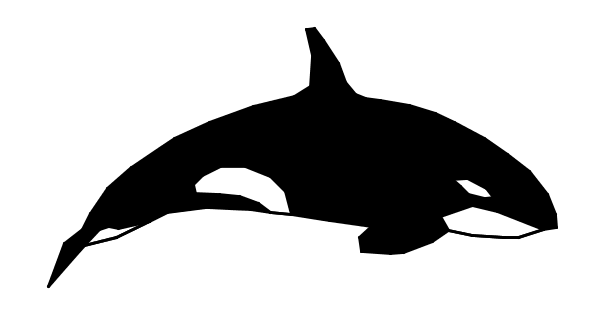15
Factor the given polynomial.
\(4r+4=\)
16
Factor the given polynomial.
\(-10r-10=\)
17
Factor the given polynomial.
\(14t^2 - 35=\)
18
Factor the given polynomial.
\({30t^{4}+80t^{3}+80t^{2}}=\)
19
Factor the given polynomial.
\({20x-50x^{2}+90x^{3}}=\)
20
Factor the given polynomial.
\({3xy+3y}=\)
21
Factor the given polynomial.
\({64x^{5}y^{8}-24x^{4}y^{8}+72x^{3}y^{8}}=\)
22
Factor the given polynomial.
\({y^{2}+9y+8y+72}=\)
23
Factor the given polynomial.
\({xy-6x-10y+60}=\)
24
Factor the given polynomial.
\({x^{3}-7-5x^{3}y+35y}=\)
25
Factor the given polynomial.
\({r^{2}-2r-80}=\)
26
Factor the given polynomial.
\({5t^{2}-23t-10}=\)
27
Factor the given polynomial.
\({3t^{2}x^{2}+tx-4}=\)
28
Factor the given polynomial.
\({3x^{2}+x+8}=\)
29
Factor the given polynomial.
\({6x^{2}-17x-3}=\)
30
Factor the given polynomial.
\({4y^{2}+16y+7}=\)
31
Factor the given polynomial.
\({9y^{2}-15y+4}=\)
32
Factor the given polynomial.
\({3y^{2}+5yr+2r^{2}}=\)
33
Factor the given polynomial.
\({2r^{2}-9rx+9x^{2}}=\)
34
Factor the given polynomial.
\({8r^{2}-17ry-21y^{2}}=\)
35
Factor the given polynomial.
\({20t^{2}+13ty+2y^{2}}=\)
36
Factor the given polynomial.
\({12t^{2}-7ty+y^{2}}=\)
37
Factor the given polynomial.
\({4x^{2}+6x-28}=\)
38
Factor the given polynomial.
\({15x^{2}y^{2}+27xy-6}=\)
39
Factor the given polynomial.
\({8y^{10}+28y^{9}+20y^{8}}=\)
40
Factor the given polynomial.
\({10y^{5}-22y^{4}+4y^{3}}=\)
41
Factor the given polynomial.
\({9x^{2}+24xy+15y^{2}}=\)
42
Factor the given polynomial.
\({9x^{2}-24xy+12y^{2}}=\)
43
Factor the given polynomial.
\({r^{2}+9r+18}=\)
44
Factor the given polynomial.
\({t^{2}-9t+14}=\)
45
Factor the given polynomial.
\({t^{2}+10tx+24x^{2}}=\)
46
Factor the given polynomial.
\({x^{2}y^{2}-xy-30}=\)
47
Factor the given polynomial.
\({x^{2}-7xt+10t^{2}}=\)
48
Factor the given polynomial.
\({2y^{2}t^{2}+10yt+8}=\)
49
Factor the given polynomial.
\({3y^{2}-12y-36}=\)
50
Factor the given polynomial.
\({10y^{7}+30y^{6}+20y^{5}}=\)
51
Factor the given polynomial.
\({10r^{6}-30r^{5}+20r^{4}}=\)
52
Factor the given polynomial.
\({2x^{2}y+10xy+12y}=\)
53
Factor the given polynomial.
\({2x^{2}y-16xy+14y}=\)
54
Factor the given polynomial.
\({3x^{2}y^{3}-15xy^{2}+12y}=\)
55
Factor the given polynomial.
\({x^{2}y^{2}+2x^{2}yz-3x^{2}z^{2}}=\)
56
Factor the given polynomial.
\({x^{2}+0.9x+0.14}=\)
57
Factor the given polynomial.
\({y^{2}-64}=\)
58
Factor the given polynomial.
\({y^{2}r^{2}-100}=\)
59
Factor the given polynomial.
\({36-y^{2}}=\)
60
Factor the given polynomial.
\({r^{4}-64}=\)
61
Factor the given polynomial.
\({r^{14}-100}=\)
62
Factor the given polynomial.
\({x^{14}-121y^{10}}=\)
63
Factor the given polynomial.
\({16t^{4}-81}=\)
64
Factor the given polynomial.
\({2x^{3}-18x}=\)
65
Factor the given polynomial.
\({x^{2}+121}=\)
66
Factor the given polynomial.
\({40-10y^{2}}=\)
67
Factor the given polynomial.
\({y^{2}+6y+9}=\)
68
Factor the given polynomial.
\({y^{2}-18yt+81t^{2}}=\)
69
Factor the given polynomial.
\({r^{2}-12r+36}=\)
70
Factor the given polynomial.
\({9r^{2}-6r+1}=\)
71
Factor the given polynomial.
\({t^{2}+6tx+9x^{2}}=\)
72
Factor the given polynomial.
\({16t^{2}+40ty+25y^{2}}=\)
73
Factor the given polynomial.
\({48x^{2}t^{2}+24xt+3}=\)
74
Factor the given polynomial.
\({100x^{5}+20x^{4}+x^{3}}=\)
75
Factor the given polynomial.
\({12y^{10}+12y^{9}+3y^{8}}=\)
76
Factor the given polynomial.
\({y^{3}+8}=\)
77
Factor the given polynomial.
\({512y^{3}+1}=\)
Hint: \(512 = 8^3\text{.}\)
78
Factor the given polynomial.
\({125r^{3}+729}=\)
Hint: \(729=9^3\text{.}\)
79
Factor the given polynomial.
\({x^{3}y^{3}+729}=\)
Hint: \(729=9^3\text{.}\)
80
Factor the given polynomial.
\({343t^{4}+512t}=\)
Hint: \(343=7^3\text{,}\) \(512=8^3\text{.}\)
81
Factor the given polynomial.
\({0.16t-t^{3}}=\)
82
Factor the given polynomial.
\({3x^{4}-243}=\)
83
Factor the given polynomial.
\({x^{2}-14x+49-64y^{2}}=\)
84
Factor the given polynomial.
\({30x^{2}\!\left(y+2\right)+36x\!\left(y+2\right)+6\!\left(y+2\right)}=\)
